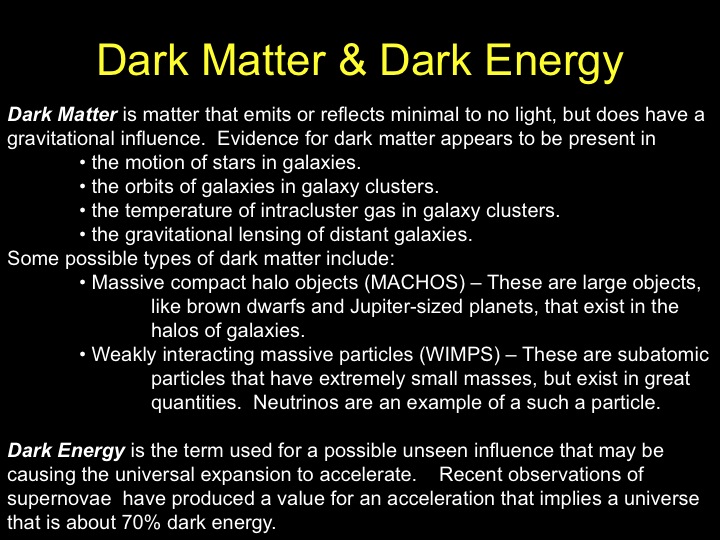In the realms of cosmology and theoretical physics, two perplexing concepts emerge: dark matter and negative energy. Both phenomena challenge our understanding of the universe, yet their interrelation remains an enigmatic question. Are negative energy and dark matter merely parallel mysteries, or is there a deeper connection that binds these two elusive aspects of the cosmos? To explore this tantalizing query, we must delve into the nature of dark matter, negative energy, and the implications of their potential relationship.
Understanding Dark Matter
Dark matter constitutes approximately 27% of the universe’s total mass-energy budget, anchored in the gravitational interactions it exerts. Unlike ordinary matter, dark matter does not emit, absorb, or reflect light; hence, it remains undetectable by conventional means. Its presence is inferred through its influence on galactic rotation curves, gravitational lensing effects, and cosmic structure formation. The leading candidates, such as Weakly Interacting Massive Particles (WIMPs) and axions, hint at exotic physics beyond the Standard Model.
Despite extensive research, direct detection of dark matter has eluded scientists. The inability to observe dark matter particles has sparked a myriad of theories, fostering debates regarding its properties and implications for cosmology. Are dark matter and negative energy mere figments of our theoretical imagination, or do they coexist in a grander cosmic symphony?
The Concept of Negative Energy
Negative energy is an abstract notion, often associated with exotic solutions in general relativity and quantum field theories. In simplistic terms, negative energy refers to scenarios where energy values fall below the vacuum energy state, contemplating peculiar phenomena such as wormholes or warp drives. Theoretical frameworks, including the concept of a negative mass or specific configurations of fields, suggest that negative energy might enable faster-than-light travel or stable traversable wormholes.
Despite its allure, the idea of negative energy remains fraught with complications. One of the significant concerns stems from the causal paradoxes it may introduce. For instance, if negative energy exists, could it violate the principle of causality by allowing for the creation of closed time-like curves? These theoretical dilemmas render negative energy an elusive but tantalizing subject of inquiry in the fabric of modern physics.
Connecting the Dots: Dark Matter and Negative Energy
At first glance, dark matter and negative energy might appear to represent disparate dimensions of the universe. Nonetheless, a closer examination reveals intriguing intersections. One compelling perspective hinges on the nature of dark energy, the mysterious force driving the universe’s accelerated expansion. If negative energy can be harnessed as a concept within dark energy frameworks, it may offer novel insights into the universe’s dynamics and its ultimate fate.
Furthermore, some speculative theories propose that dark matter could be intrinsically related to negative energy phenomena. For instance, certain models posit that dark matter might possess characteristics akin to negative mass—an exotic conjecture that could yield unexpected consequences in gravitational interactions. This hypothesis could reshape our understanding of cosmic structure formation, offering a fresh lens to perceive galactic dynamics and dark matter distribution.
The Playful Challenge
Now, here poses a playful question: What if negative energy serves as the dark counterpart to dark matter? Could this relationship illuminate the swirling shadows that encapsulate both concepts? While the scientific community has yet to arrive at a consensus, the contemplation of such theories opens avenues for innovative thought experiments and testing new paradigms in physics.
To explore this challenge, one must grapple with the implications of a universe containing both dark matter and negative energy. If these two entities coexist, how would they interact on cosmological scales? Would negative energy clusters produce gravitational repulsion, altering the conventional behavior of dark matter within galaxies? Such interactions could lead to phenomena that challenge our grasp of gravitational dynamics, compelling us to reassess our models.
Cosmological Implications
The interplay between dark matter and negative energy extends beyond mere theoretical musings; it could significantly impact cosmology’s predictive power. A model incorporating both dark matter and negative energy could reconcile discrepancies in observed cosmic microwave background radiation and large-scale structure formations. This synthesis may pave the way for new observational techniques, enhancing our ability to probe elusive regions of the universe.
Moreover, understanding the synergy or discord between dark matter and negative energy might unveil answers to critical questions in fundamental physics. How do these entities relate to cosmic inflation and the Big Bang theory? Could revelations about dark matter’s properties give rise to new methodologies for harnessing or manipulating negative energy paradigms? This dual exploration remains ripe for investigation.
Conclusion: A Cosmic Puzzle Yet to be Solved
In conclusion, the enigma of whether dark matter and negative energy are related invites profound contemplation. As we stand on the precipice of new discoveries, the scientific quest for knowledge teeters between established paradigms and the uncharted territories of theoretical formulations. One might not unravel the intricate tapestry of dark matter and negative energy for years to come. Yet, humanity’s relentless curiosity may yet yield. Through dedicated inquiry, interdisciplinary collaboration, and innovative physics, answering the question could transform our comprehension of the universe itself. Until then, we are left with a universe that beckons further exploration, delighting in the mysteries yet to be unraveled.












